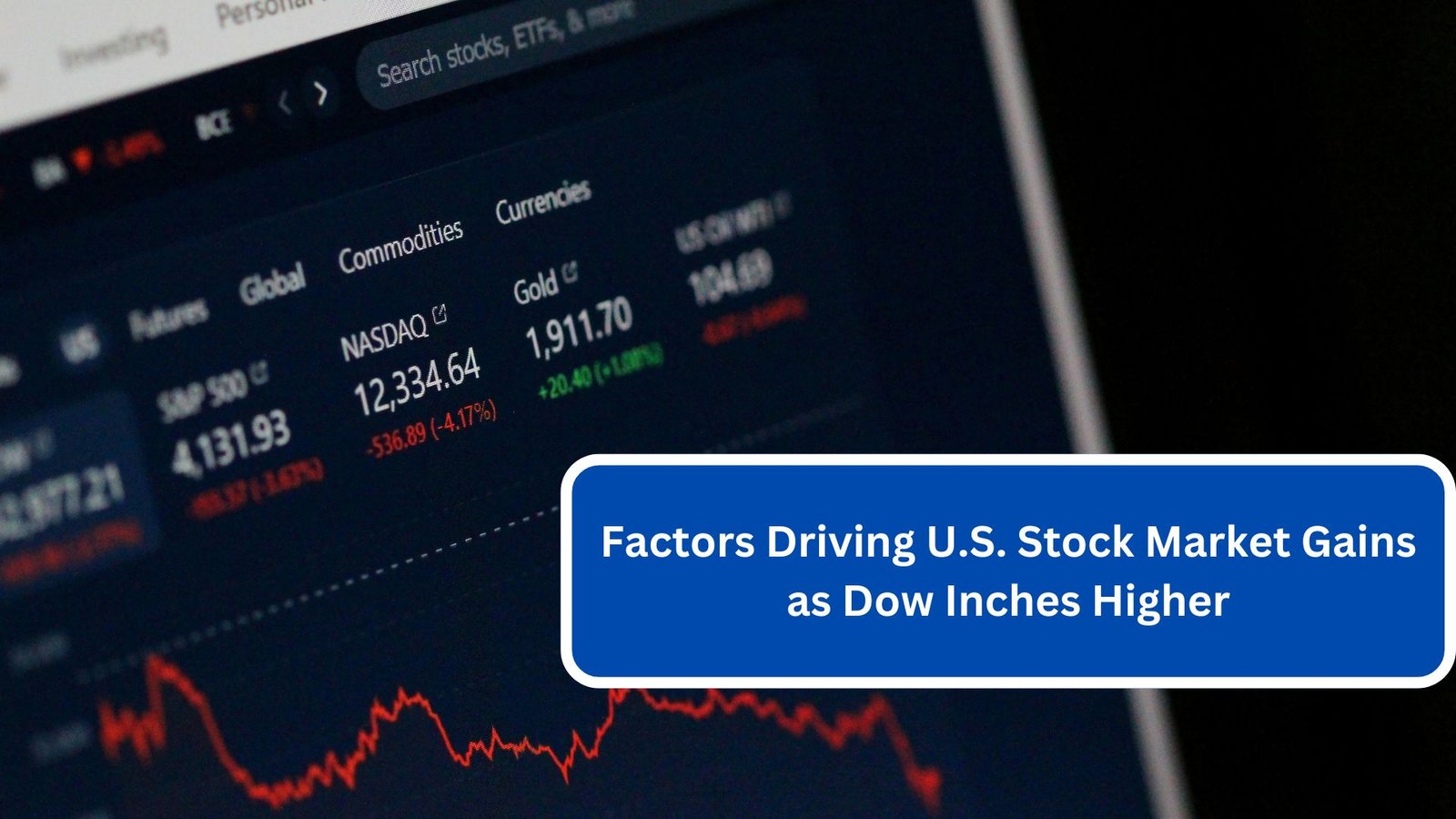In the latest trading session, the Dow Jones Industrial Average (DJIA) edged higher, reflecting a broader trend of optimism within the U.S. stock market. As the index inched upward, various factors contributed to this positive momentum, including strong corporate earnings, favorable economic indicators, and supportive monetary policy. In this article, we delve into the key drivers behind the recent gains in the U.S. stock market and what they signify for investors moving forward.
1. Strong Corporate Earnings
a. Exceeding Expectations
One of the primary catalysts for the recent uptick in the Dow has been the robust earnings reports from major corporations. Many companies have exceeded analysts’ expectations, demonstrating resilience despite ongoing economic challenges. Key highlights include:
- Technology Giants: Companies like Apple, Microsoft, and Amazon reported solid earnings, driven by strong sales in cloud services, consumer electronics, and digital advertising. The continued demand for innovative tech solutions has buoyed investor sentiment and pushed stock prices higher.
- Financial Sector Resilience: Major banks, including JPMorgan Chase and Goldman Sachs, also posted strong quarterly results, bolstered by healthy trading revenues and a rebound in lending activity. Their performance has provided additional support for the broader market.
b. Positive Guidance
Many companies have issued optimistic forward guidance, suggesting confidence in future growth prospects. This has further fueled investor enthusiasm, as positive outlooks can lead to increased investment and consumer spending, supporting the overall economy.
2. Favorable Economic Indicators
a. Consumer Confidence
Recent reports indicate a rise in consumer confidence, reflecting optimism about the economy and personal financial situations. Higher consumer confidence typically translates into increased spending, which is crucial for economic growth.
b. Labor Market Strength
The labor market continues to show signs of strength, with decreasing unemployment claims and an increase in job openings. A robust labor market supports consumer spending and contributes to overall economic stability, which in turn benefits corporate earnings.
c. Inflation Trends
Recent economic data suggest that inflation may be stabilizing. As inflationary pressures ease, concerns over aggressive interest rate hikes by the Federal Reserve have diminished, further encouraging investor sentiment and supporting stock prices.
3. Supportive Monetary Policy
a. Federal Reserve Stance
The Federal Reserve’s current approach to monetary policy remains a significant factor in driving stock market gains. Recent communications from Fed officials suggest a cautious approach to interest rate hikes, which has been well-received by investors.
- Low Interest Rates: Keeping interest rates lower for an extended period helps stimulate borrowing and investment, fostering an environment conducive to economic growth. This, in turn, supports higher stock valuations.
b. Market Stability
The Fed’s commitment to maintaining economic stability provides a safety net for investors. A stable monetary environment encourages risk-taking and investment in equities, which contributes to overall market gains.
4. Positive Market Sentiment
a. Geopolitical Stability
While geopolitical tensions persist globally, recent developments have fostered a sense of stability that has positively impacted market sentiment. Easing tensions can reduce uncertainty, encouraging investors to take on more risk in the stock market.
b. Technical Indicators
Traders have noted strong technical indicators suggesting a bullish market sentiment. The DJIA’s ability to hold above key support levels has prompted buying activity, further fueling upward momentum in stock prices.
5. Sector Rotation
A notable trend in the market has been sector rotation, with investors reallocating funds from defensive sectors to growth-oriented sectors. This shift indicates a growing appetite for risk and potential growth opportunities, particularly in technology, healthcare, and consumer discretionary sectors.
a. Growth vs. Value
Investors are increasingly favoring growth stocks, particularly in technology and healthcare, over traditional value stocks. This rotation reflects confidence in the economic recovery and the potential for higher returns in growth-oriented sectors.
Conclusion
The recent gains in the Dow Jones Industrial Average and the broader U.S. stock market can be attributed to a confluence of factors, including strong corporate earnings, favorable economic indicators, supportive monetary policy, and positive market sentiment. As the economy continues to recover, these elements are likely to play a crucial role in shaping market dynamics.
However, investors should remain vigilant regarding potential risks, including inflationary pressures and geopolitical uncertainties that could impact future market performance. By staying informed and strategically positioned, investors can navigate the complexities of the stock market and capitalize on emerging opportunities in this evolving landscape.

